Learning data science was one of the best decisions I ever made. Most of you can do it, and even if you don’t become a data scientist or machine learning engineer, you’ll learn:
- Programming
- How to build apps
- How to analyze and visualize data
- Strong statistics and research skills
- How to communicate data clearly
Many amazing job options will be open to you, but you will have to work hard.
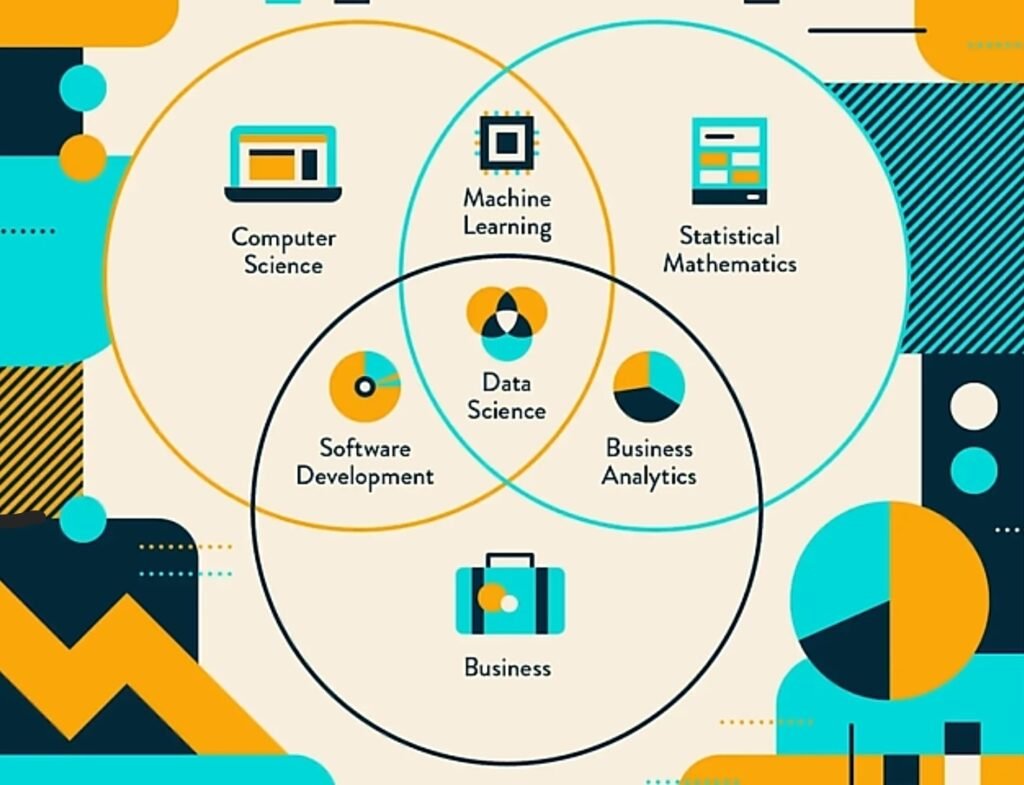
The question is: what should you work hard on, and how do you even start? That’s what I’m here to tell you.
- Learning How to Learn Machine Learning
- Where to Start Machine Learning?
- Understand Data Structures and Algorithms
- Essential Math for Machine Learning
- Core Machine Learning Concepts & Algorithms
- Your Ultimate Machine Learning Roadmap: Step by Step
- ✅ Step 0: Basic Math for Machine Learning (Before Python)
- ✅ Step 1: Learn Python
- ✅ Step 2: Learn NumPy and Pandas (Work with numbers & data)
- ✅ Step 3: Learn Data Visualization (See the data clearly)
- ✅ Step 3.5: Learn SQL (for structured data)
- ✅ Step 4: Learn Basic Machine Learning
- ✅ Step 4.5: Learn Feature Engineering
- ✅ Step 5: Practice on Kaggle
- ✅ Step 6: Learn Deep Learning (The brain of AI)
- ✅ Step 7: Build Projects
- ✅ Step 7.5: Learn Model Deployment (Make your model useful!)
- ✅ Step 8: Learn MLOps (Engineering side of ML)
- ✅ Step 9: Learn Advanced Topics (Optional, Based on Interest)
- ✅ Step ∞: Learn to Share & Grow
- 📌 Why This Order?
- 💬 Final Thought (From one builder to another):
- Your First Machine Learning Project
- Avoiding Tutorial Hell
- Collaborate & Share Your Work
- Final Do’s & Don’ts
Learning How to Learn Machine Learning
Before we even touch machine learning, let’s talk about something crucial: learning how to learn.
Why This Matters?
Machine learning and AI—like most things in tech—are in a constant state of evolution. What matters isn’t just what you know, but how fast you can adapt to new concepts, frameworks, and methodologies. The ability to learn quickly is arguably the most important skill in this field.
I’ll let you in on a little secret: I’m not a programming genius.
I don’t have an encyclopedic knowledge of every algorithm, and I definitely don’t solve Leetcode Hard problems for fun.
But one thing I am good at? Learning fast.
Why Learning Fast Matters More Than Memorization?
Tech moves at breakneck speed – Every few months, a new framework emerges, making older ones less relevant.
For example, TensorFlow dominated the deep learning space for years, but PyTorch has been rapidly taking over.
As of 2023, over 64% of researchers prefer PyTorch over TensorFlow for deep learning (source: Papers With Code, link).
If you’re stuck in the past, your skills can become obsolete before you even land your first job.
Machine learning isn’t about memorizing algorithms – It’s about understanding data, recognizing patterns, and solving complex problems creatively.
The real world doesn’t give you neatly packaged datasets with clear objectives.
You’ll deal with messy, incomplete, and biased data, and your job is to make sense of it.
Confidence and adaptability beat raw knowledge – The best ML engineers aren’t the ones who know everything but the ones who can figure things out quickly.
When faced with an unfamiliar problem, do you panic, or do you break it down, research solutions, and adapt?
A 2022 survey by LinkedIn found that the top skill companies look for in data scientists is problem-solving, not memorized formulas (source: LinkedIn Learning Report, link).
Learning efficiently saves time – A huge mistake I made early on was spending weeks on unnecessary theory before even touching real-world projects.
I’ve seen people get stuck in “tutorial hell,” watching endless YouTube videos on ML but never actually applying it. The fastest learners dive into projects first and pick up the theory as needed.
The Harsh Reality: ML Isn’t for Those Who Fear Change
If you’re someone who prefers stability, machine learning might drive you insane. The tools you master today could be irrelevant in a year.
The AI landscape is shifting so rapidly that what you learned last month could already have better alternatives.
Take OpenAI’s ChatGPT—just as people were getting comfortable with GPT-4, rumors of GPT-5 started circulating.
So, here’s my advice: Don’t just learn ML. Learn how to learn. Because in this field, your ability to adapt is what will keep you ahead. 🚀
How Do You Learn How to Learn?
There’s no one-size-fits-all solution. Some people learn with graphs, others with text, some with voice notes. Some need theory before application, others need to dive in and experiment first.
A principle that has helped me a lot is the Pareto Principle (80/20 rule):
80% of results come from 20% of the effort. Constantly ask yourself: Is this getting me where I want to be, or can I do something more useful with my time?
Where to Start Machine Learning?
Now, let’s build your machine learning foundation the right way.
1. Learn Python
First up, you need to get proficient with Python. It’s the primary language used in machine learning. It’s pretty simple, and you can get a decent grasp of it in about a month or two.
Some jobs might ask for other languages like Java, R, or C++ for performance reasons, but as a beginner, just stick to Python. Don’t overwhelm yourself by trying to learn everything at once—focus on mastering Python first.
Why Python?
Python is the main language of data science and machine learning.
It’s simple, readable, and allows you to write real code quickly.
Even if you don’t pursue ML, Python skills open doors in programming, data analysis, and web development.
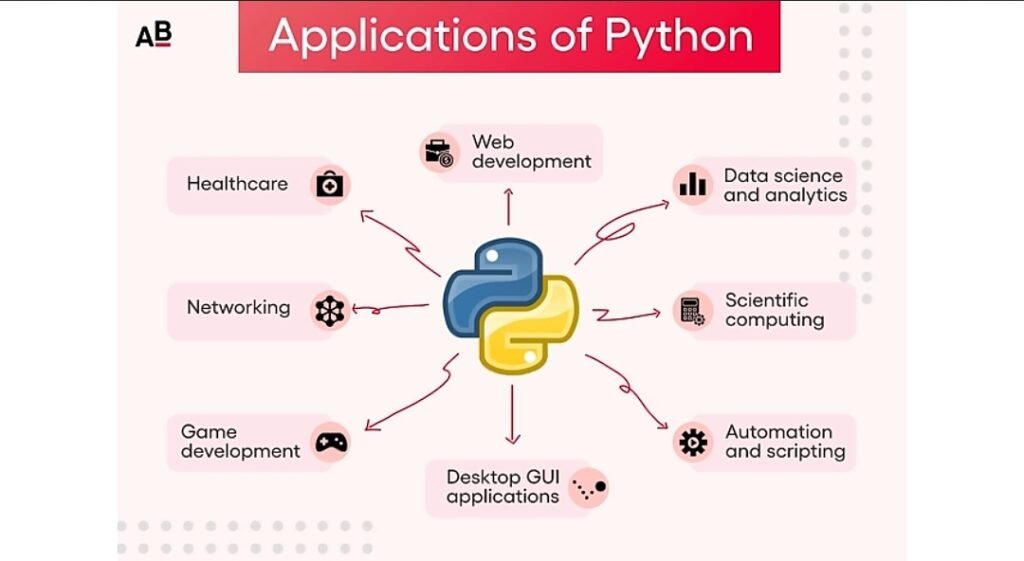
What to Learn in Python
Start with Jupyter Notebooks—they make learning easier and are widely used in data science. Then, cover:
- Programming fundamentals – Syntax, indentation, comments
- Data types – Strings, integers, floats, booleans, lists, dictionaries
- Control flow – If-else statements, loops
- Functions, classes, and objects
- Modules and packages
2. Learn Version Control with Git
The next thing you need to learn is a version control system like Git.
Git is not a programming language; it’s a tool we use to track changes to our code and collaborate with others.
Git has a ton of features, but you don’t need to learn all of them.
Think of it like the 80/20 rule—80% of the time, you use 20% of Git’s features. So, one to two weeks of practice is enough to get up and running.
3. Learn Pandas
Pandas is Python’s primary data manipulation library. It’s like Excel on steroids, designed for handling tabular data. You’ll use it to clean, reshape, merge, and analyze data.
Mastering Pandas will:
- Make you a great data analyst
- Help you with exploratory data analysis (which is 60-80% of a data scientist’s job)
4. Get Comfortable with SQL
SQL (Structured Query Language) is a very simple language we use for working with databases.
As a machine learning engineer, you should know how to use SQL to access and organize the data you need for your models.
SQL is pretty simple,
and you can get a decent grasp of it in about a month or two.
Understand Data Structures and Algorithms
I know a lot of self-taught engineers skip this step, thinking they can just dive into coding, but trust me—it’s a huge mistake.
Skipping data structures and algorithms (DSA) is like trying to build a skyscraper without understanding the foundation.
Sure, you might manage smaller projects, but when things get complex, your code will crumble.
Mastering these concepts dramatically improves problem-solving skills, which is exactly what separates average coders from top-tier engineers.
Big tech companies—Google, Amazon, Facebook—obsess over DSA in their interviews for a reason.
They know that someone who can optimize an algorithm and pick the right data structure will build faster, more scalable applications.
In fact, Google once reported that algorithmic efficiency saves them millions of dollars in server costs each year.
I learned this the hard way. Early in my journey, I struggled with a project that required handling millions of records efficiently.
My initial solution worked—until it didn’t. The system slowed down to a crawl, and I spent days debugging before realizing a simple hashmap instead of a list would have saved me hours of frustration.
That’s when it hit me: understanding DSA isn’t just for passing coding interviews—it makes real-world coding 10x easier.
If you’re serious about leveling up, dedicate at least 1-2 months to solid DSA practice. Sites like LeetCode, HackerRank, and Codeforces offer structured challenges.
Your First Data Analysis Project
Before jumping into machine learning, work on an actual project to deepen your Python and Pandas skills.
Steps:
- Find a dataset – Use your own data, government data, World Bank data, or Kaggle datasets.
- Import and clean the data – Fix missing values, handle outliers, make units uniform.
- Analyze the data – Use Pandas and Matplotlib to visualize relationships and find insights.
- Tell a story with your data – Create graphs, draw conclusions, and present them (Jupyter Notebooks can turn your work into a slideshow!).
This will be your first portfolio project, which can help you land a job as a data analyst.
Essential Math for Machine Learning
This might be the part you fear most, but it’s the most important part if you want to succeed in ML.
Focus on These Areas:
- Basic Statistics & Probability – The most critical branch for data analysis and ML.
- Linear Algebra – Learn how to operate with vectors and matrices.
- Calculus – Understand derivatives and optimization.
You don’t need a PhD—just focus on intuition and applying these concepts rather than memorizing proofs.
Core Machine Learning Concepts & Algorithms
Machine learning algorithms fall into two major categories:
Supervised Learning – The model learns from labeled data, meaning each input comes with a known output. Think of it like a student learning with an answer key—every time they make a mistake, they get immediate feedback.
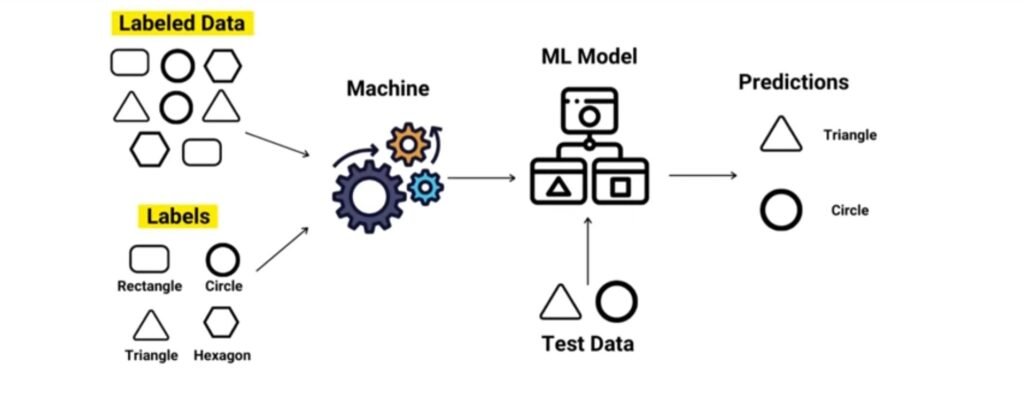
Unsupervised Learning – The model works with unlabeled data and tries to discover patterns and relationships on its own, almost like a detective piecing together clues without knowing the full story.
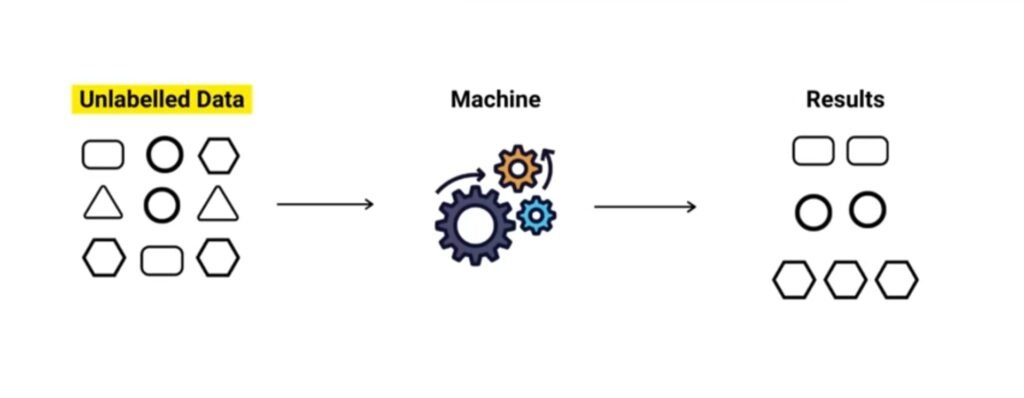
A common mistake many beginners make?
Jumping straight into deep learning.
It’s tempting—after all, who doesn’t want to build fancy neural networks?
But deep learning is resource-intensive, requires huge datasets, and often lacks interpretability. Before diving in, it’s crucial to master the fundamentals.
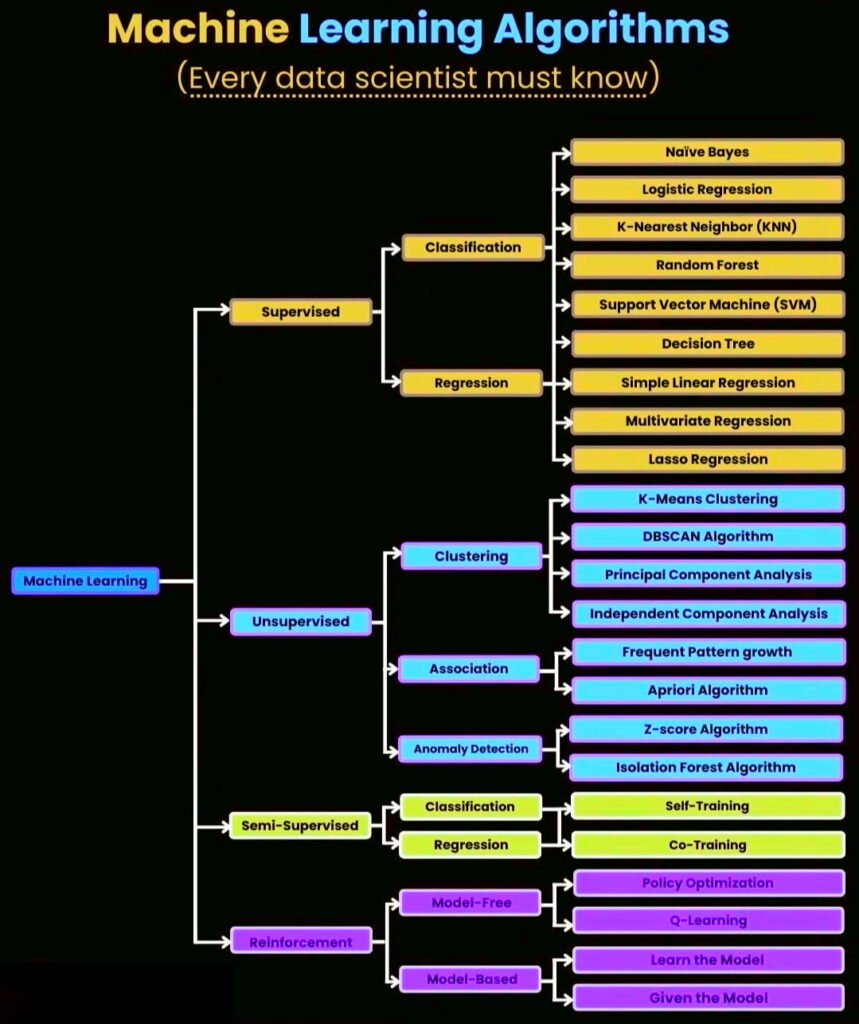
Start With Simpler Algorithms First
If you’re just getting into machine learning, begin with:
- Linear Regression & Logistic Regression – These are the building blocks for many advanced techniques and will help you grasp core statistical principles.
- Decision Trees & Ensemble Methods (like Random Forests and Gradient Boosting) – These models are often shockingly powerful despite their simplicity. They work well on structured data and are used in real-world applications like credit scoring, fraud detection, and even predicting customer churn.
These foundational models are:
✅ Easier to implement (no need for massive computing power)
✅ More interpretable (you can actually understand their decisions)
✅ Generalize better (less likely to overfit than deep neural networks)
✅ Fundamental for deep learning (many deep learning ideas stem from these)
How Long Does It Take to Learn Machine Learning?
Expect to spend at least 3-4 months learning the core concepts.
This includes math fundamentals (linear algebra, probability, and statistics), learning algorithms, and working with real datasets.
A study by Kaggle found that 58% of data scientists started with regression models before moving on to deep learning (Kaggle ML Survey).
Essential Tools You Must Know
You’ll need to get comfortable with these industry-standard ML libraries:
- Scikit-learn – Best for traditional ML algorithms (regression, decision trees, SVMs).
- TensorFlow & PyTorch – Essential for deep learning, but only once you have the basics down.
Trying to learn all three at once?
Bad idea.
Start with Scikit-learn,
since it’s the easiest to grasp and widely used for small-to-medium datasets.
Learn from the Best
One of the best resources is “An Introduction to Statistical Learning”, a must-read for anyone serious about machine learning.
Even better?
The authors have a free 20-hour video course on YouTube—perfect if you prefer learning visually.
Want to avoid common mistakes?
Take it step by step. Master the basics first. That’s the difference between a beginner who gets stuck and an ML engineer who thrives. 🚀
Your Ultimate Machine Learning Roadmap: Step by Step
✅ Step 0: Basic Math for Machine Learning (Before Python)
📌 Why? ML is just math applied to data. Without basics, it’ll feel like magic (or pain).
Learn:
- Linear Algebra – vectors, matrices, dot products Like numbers organized in rows and columns — used everywhere in ML.
- Probability & Statistics – mean, variance, standard deviation, distributions Used to find patterns and make predictions.
- Basic Calculus – gradients (optional at first, deeper later) Needed to train deep models and adjust them properly.
🧠 You don’t need to master these first, but start watching beginner-friendly videos (like 3Blue1Brown or StatQuest) alongside coding.
✅ Step 1: Learn Python
- 📌 Why? You need a language to “talk” to computers. Python is the easiest and most used in ML.
- 🔧 What to learn:
- Variables, loops, if-else, functions
- Lists, dictionaries
- Basic file reading/writing
🧠 Think of this like learning how to write and speak before writing essays.
✅ Step 2: Learn NumPy and Pandas (Work with numbers & data)
- 📌 Why? ML is about learning from data. These tools help you organize and play with data easily.
- 🔧 What to learn:
- Arrays (NumPy)
- DataFrames (Pandas)
- Filtering, sorting, grouping, basic stats
🧠 Like organizing your school results in a spreadsheet before analyzing them.
✅ Step 3: Learn Data Visualization (See the data clearly)
- 📌 Why? Before teaching the machine, you must understand the data yourself.
- 🔧 Use:
Matplotlib,Seaborn - Learn:
- Line plots, bar charts, histograms, scatter plots
🧠 Imagine you’re trying to find patterns in your marks over months—seeing helps more than just reading.
✅ Step 3.5: Learn SQL (for structured data)
📌 Why? In the real world, most data is stored in databases. You need SQL to access it.
Learn:
- Basic database operations: CRUD, Join, Basic queries, Hive,
- SELECT, WHERE, GROUP BY, JOIN
- Practice on free platforms like Mode Analytics or SQLZoo
🧠 Think of it like asking Google questions about your data table.
✅ Step 4: Learn Basic Machine Learning
- 📌 Why? This is where computers start learning from data, like you learning from examples.
- 🔧 Use:
scikit-learn - Learn:
- Classification (e.g., predict if a message is spam)
- Regression (e.g., predict someone’s salary)
- Train-Test Split
- Accuracy, Confusion Matrix
🧠 Like showing the computer many pictures of cats and dogs, and then asking it to guess new ones.
✅ Step 4.5: Learn Feature Engineering
📌 Why? Good models come from good input data. You have to shape and clean the data well.
Learn:
- One-hot encoding, label encoding
- Scaling (MinMax, StandardScaler)
- Creating new features from existing ones (date → day/month, etc.)
🧠 Like cooking: even the best chef can’t make a good dish with bad ingredients.
✅ Step 5: Practice on Kaggle
- 📌 Why? Real learning comes by solving problems yourself.
- 🔧 What to do:
- Titanic survival challenge (beginner-friendly)
- Use notebooks and follow others’ code
- Try simple datasets like House Prices, Digit Recognition
🧠 Like joining a school quiz competition — practice and learn from others too.
✅ Step 6: Learn Deep Learning (The brain of AI)
- 📌 Why? This is how computers recognize faces, translate languages, and drive cars.
- 🔧 Use:
PyTorchorTensorFlow+Keras - Learn:
- Neural Networks
- Image classification (CNNs)
- Text classification (LSTMs, Transformers)
🧠 Think of it as teaching the computer in layers, like building brain cells step by step.
✅ Step 7: Build Projects
- 📌 Why? Projects prove what you’ve learned and show others too.
- Ideas:
- Predict house prices
- Classify handwritten digits
- Detect fake news
- Build a personal chatbot
🧠 Like science fair projects — you apply what you learned and show the world!
✅ Step 7.5: Learn Model Deployment (Make your model useful!)
📌 Finally, you need to know how to put the models you build into action. This means learning how to:
Learn:
- Export model with
joblib,pickle, ortorch.save() - Create a REST API using Flask or FastAPI
- Share it on Render, Hugging Face Spaces, or Streamlit
- Use Docker – A tool that packages your model and all its dependencies so it runs smoothly on any machine.
🧠 Like making your model available to the world through a website or app. Spend 1 to 2 months mastering these basics so you can confidently deploy your models and make them available for real-world use.
✅ Step 8: Learn MLOps (Engineering side of ML)
📌 Why? In real companies, models run every day, update automatically, and are monitored for quality.
Learn:
- Model versioning (DVC)
- Pipelines (Airflow, Prefect)
- Logging & Monitoring (Weights & Biases, MLflow)
- Deployment on cloud (AWS, GCP, Azure)
🧠 Think of it as the DevOps of ML — automation, reliability, and scaling.
✅ Step 9: Learn Advanced Topics (Optional, Based on Interest)
Only go here after mastering the basics
Choose based on your interest:
- Ensemble Learning – Combines multiple models to improve performance.
- NLP (Language) – Works with text data. Transformers, Sentiment Analysis, Chatbots
- Computer Vision – Object Detection, Image Segmentation
- Time Series – Stock prices, sensors, weather
- Recommender Systems – Netflix, Spotify algorithms
- Reinforcement Learning – AI in games, robotics
- Explainability – SHAP, LIME, Bias detection
Spend about 2 to 3 months on these advanced concepts to deepen your knowledge and skills.
Learn These By Need, Not By FOMO
You don’t need to know everything—just what’s useful for your projects.
🧠 This is where you specialize, like becoming a heart surgeon after med school.
✅ Step ∞: Learn to Share & Grow
- 📌 Why? Sharing = learning more + getting noticed.
- 🔧 What to do:
- Upload notebooks on Kaggle
- Share projects on GitHub
- Write small posts on Medium or LinkedIn or a Your Blog post
🧠 It’s like showing your cool project to the world and making friends who also love building things.
📌 Why This Order?
| Step | Why First? |
|---|---|
| Basic Math | You need to understand the numbers, shapes, and logic behind ML. |
| Python | You need a language to talk to the computer. |
| NumPy & Pandas | You need to organize and understand data. |
| Data Visualization | You must see the data to understand it. |
| SQL | Most real-world data lives in databases—you need to query it. |
| Basic ML (scikit-learn) | Start teaching the computer from simple data. |
| Feature Engineering | You prepare better input so the model can learn smarter. |
| Model Evaluation | Helps you check if your model is really doing well. |
| Kaggle Practice | Real practice makes you confident and job-ready. |
| Deep Learning | Learn how the computer recognizes faces, images, or text. |
| Transfer Learning | You don’t always need to start from scratch—use pretrained models. |
| Model Deployment | Share your models with the world via web or apps. |
| MLOps | Make your models reliable, trackable, and scalable in the real world. |
| Specializations (CV, NLP, RL, etc.) | Choose the path you love—like text, images, time series, or robotics. |
| Projects | You prove your skills by building real things. |
| Portfolio & Sharing | You grow your career by showing your work online. |
This table follows a natural learning curve:
Math → Code → Tools → Models → Real-world → Career.
💬 Final Thought (From one builder to another):
Don’t worry about learning everything at once.
Take one step, build something tiny, and slowly you’ll become the person who understands AI, builds with AI, and helps others too.
Your First Machine Learning Project
Now, apply what you’ve learned to a real project.
Steps:
- Find a dataset – You can continue your previous data project or find a new one.
- Explore the data – Use Pandas and Matplotlib to visualize trends.
- Build a simple model – Start with Linear Regression or Decision Trees before moving to complex models.
- Evaluate your model – Use train/test splits and check for overfitting.
Avoiding Tutorial Hell
A common beginner pitfall: getting stuck in tutorial hell.
How to avoid it:
- Do only 1-2 tutorials per area, max
- Work on real projects
- Break things and fix them – Learning happens in trial and error
Collaborate & Share Your Work
Learning ML in isolation is the slowest way to learn. Instead:
✅ Find coding buddies
✅ Present your work to friends or online communities
✅ Join a hackathon or Kaggle competition
✅ Get feedback from advanced learners
Final Do’s & Don’ts
❌ Don’t:
- Get stuck in tutorial hell
- Try to memorize everything
- Learn in isolation
- Chase every new trend
✅ Do:
- Build real projects
- Master fundamentals first
- Implement from scratch
- Learn by doing

